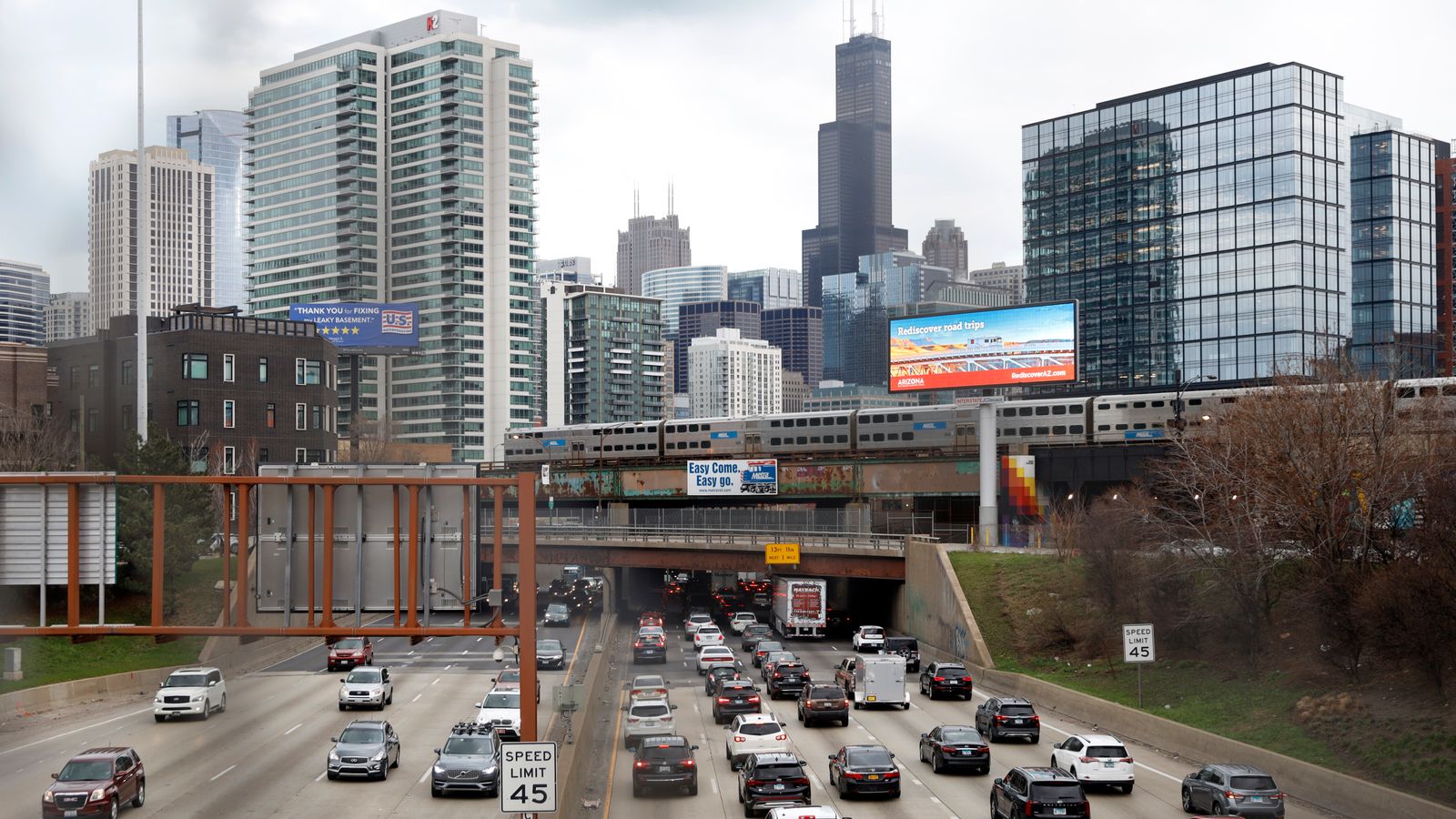US president Joe Biden has unveiled his $2.3trn (£1.7trn) infrastructure investment plan.
It is nothing if not ambitious.
The biggest single element in it is $621bn earmarked for improving transport infrastructure and enabling the greater roll-out of electric vehicles.
There is also $561bn towards making housing, schools and utilities more climate friendly; $480bn for manufacturing and research and development; $400bn for social care and $200bn for upgrading the broadband network and for providing digital training.
They represent a big change of direction for the United States.
Stripping out expenditure on defence and security, US government spending as a proportion of GDP has been falling since Ronald Reagan became president in 1981, something these proposals would dramatically reverse.
That is why this programme is going to spark controversy.
The biggest single area of controversy is that unlike the $1.9trn stimulus package passed last month to help Americans through the recovery from the pandemic, which was financed by extra government borrowing, this latest package will also be paid for by higher taxes and, in particular, a hike in the corporate tax rate from 21% to 28%.
Please use Chrome browser for a more accessible video player
There will also be changes to remove the loopholes through which some US businesses are allowed to move profits overseas to lower tax jurisdictions, chiefly by doubling the so-called Global Intangible Low Tax Income (GILTI) tax from 10.5% to 21%. This effectively sets a minimum tax rate for American companies on their global earnings.
This may alarm the Irish government which, by levying an ultra-low 12.5% corporate tax rate, has attracted billions of dollars of investment from US companies. American multinationals now face the prospect of their foreign earnings being taxed at 21%.
Much of this is expected to be borne, in particular, by the tech giants. It was significant that, in his speech outlining his plan, Mr Biden cited a 2019 report which claimed 91 out of the companies in the Fortune 500 had paid no federal taxes in 2018.
Only one of these companies, however, got a specific namecheck from Mr Biden.
The president said: “Amazon use various loopholes so they pay not a single solitary penny in federal income tax. I don’t want to punish them, but that’s just wrong. That’s just wrong. Fireman, teacher, paying 22% [tax], Amazon and 90 other major corporations paying zero in federal taxes? I’m going to put an end to that.”
That is not to say Mr Biden’s infrastructure package will not also entail extra borrowing.
Aneta Markowska, chief economist at the investment bank Jefferies, told clients: “We estimate that the proposed tax increases are worth roughly $1.3trn, which offsets roughly 60% of the new spending, in other words 40% will be deficit-financed.”
The president faces a battle getting his package through US Congress as a lot of Republicans, but also some moderate Democrats, will be alarmed at the size and scale of this package.
Mr Biden’s successor, Donald Trump, had similarly sought to unveil a big investment in infrastructure in 2017 but it never came to anything due to disagreements over how it would be paid for.
Moderate Democrats are already threatening to scupper the package unless Mr Biden removes the cap his predecessor imposed on the ability of Americans to deduct state and local taxes from their federal tax bill.
Mr Trump hoped it would lead to Americans in high-spending states like New York and New Jersey rein in their spending but, instead, it has driven thousands of them to lower-spending states like Texas and Florida.
Leaving aside the proposed tax increases to finance the plan, there are specific concerns about the package, including the comparatively small amount – just 6% of the entire sum – that will be going to build or improve roads and bridges.
A lot of the money, for example the $400bn earmarked for social care, is being targeted at an expansion of access to care for elderly and disabled people and of Medicaid, the US government scheme that helps low-income Americans meet their healthcare costs. That is a long way from infrastructure and looks more like social spending.
The second is the sheer expense of what Mr Biden is proposing. By some estimates, adjusted for inflation, the sum the president plans to spend is four times what it cost to build the entire US inter-state highway system in the 1950s.
Even that is not enough for some on the left of Mr Biden’s party, such as the New York congresswoman Alexandria Ocasio-Cortez, who tweeted that Mr Biden’s package “needs to be way bigger”.
The scale of spending proposed has raised a third concern which is that, when so much money is being spent at once, whether it can be invested effectively.
The $100bn that has been earmarked for upgrading the electricity grid to prepare for greater uptake of electric vehicles is seen in particular as being potentially wasteful. There are a lot of questions about whether all of this spending, in the name of infrastructure but much of it going on anything but, will boost the productive capacity of the US economy.
There will also be concerns that, with the US economy expected to be running at full capacity before too long, there will be other malign effects from these proposals.
One is the ‘crowding out’ effect – that the government, with its lower cost of borrowing, will ‘crowd out’ businesses which, with the discipline of the private sector, could do a lot of this work more cheaply and efficiently.
There will also be concerns that this spending package will inject a huge dose of inflation into the US economy, forcing the US Federal Reserve to raise interest rates earlier than it would have liked, which bond markets are already starting to price in.
The yield on 10-year US Treasuries (US government IOUs) has risen from 0.9% to 1.7% since the beginning of the year.
Despite these very legitimate concerns, Wall Street economists are confident the package will boost not only US GDP, but also corporate profits.
Ms Markowska said: “We expect a 0.7% GDP boost from infrastructure spending in 2022, offset by a 0.2% drag from higher corporate tax rates.”
But this is only the start. Mr Biden proposes to unveil another package, costing a further $1trn, in coming weeks.
Called the ‘American Family Plan’ it promises a big increase in spending on education and child care provision. It, too, is likely to entail higher taxes.
It all marks a return to the age of big government in the US.






















